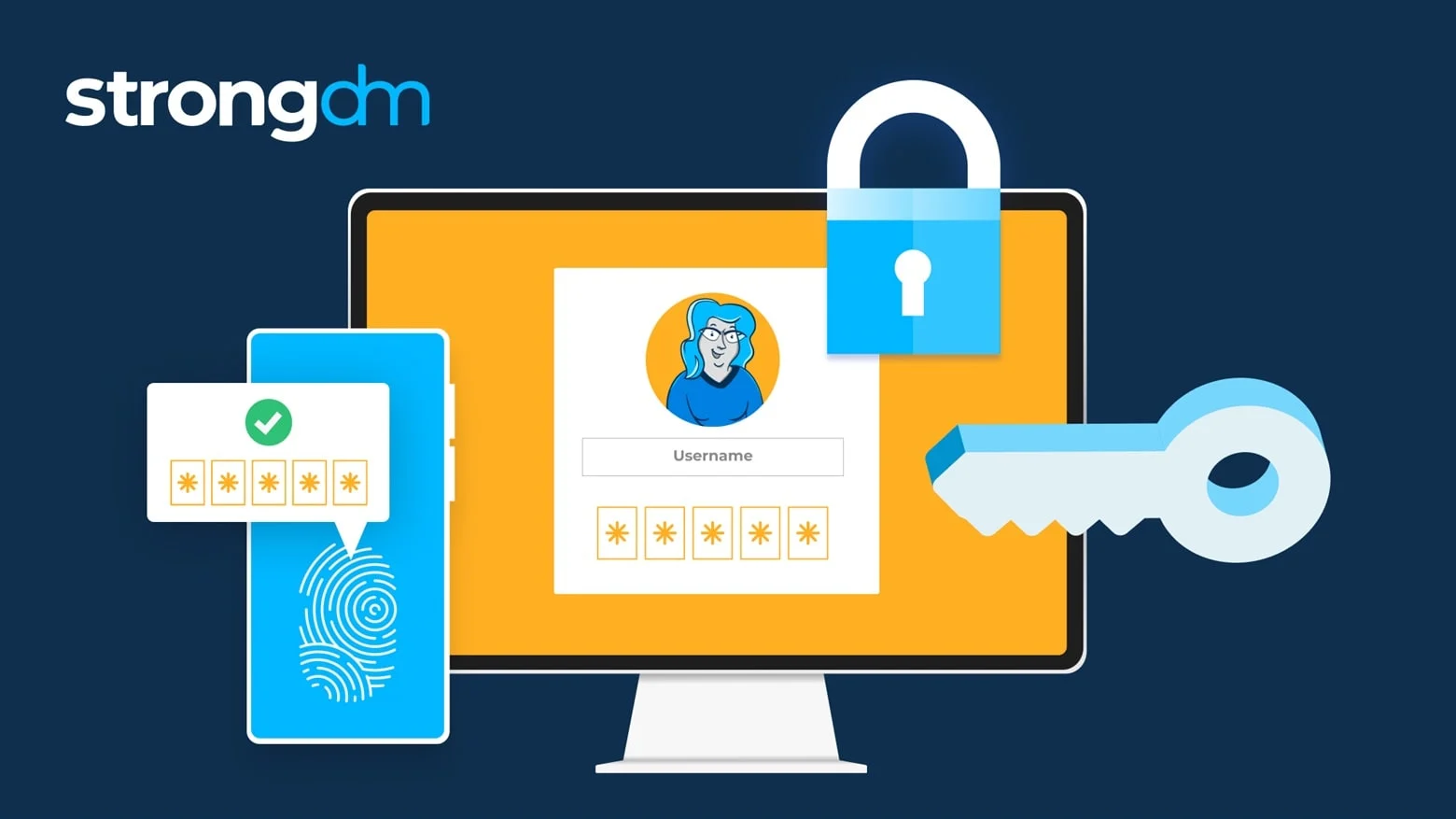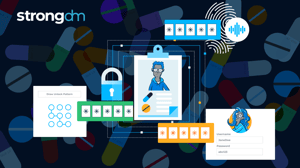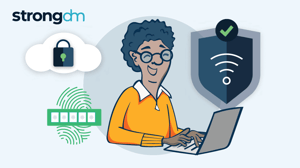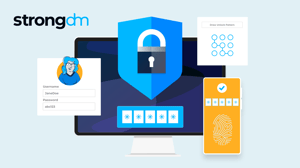9 User Authentication Methods to Stay Secure in 2026


Written by
John MartinezLast updated on:
June 25, 2025Reading time:
Contents
Built for Security. Loved by Devs.
- Free Trial — No Credit Card Needed
- Full Access to All Features
- Trusted by the Fortune 100, early startups, and everyone in between
Our digitally interconnected workplaces allow us to share information online in ways that were only a dream a few decades ago. However, this increased connectivity comes with a privacy tradeoff. As companies store more data, there’s a higher risk of unauthorized access to private information.
User authentication plays an essential role in securing networks and ensuring that only authorized users can access sensitive data. As our infrastructure transitions from traditional on-premises setups to cloud and hybrid environments, our authentication methods must continue evolving.
Why is User Authentication Important?
User authentication acts as a gatekeeper, allowing only pre-screened individuals to access valuable resources such as personal accounts, confidential data, and company networks. Without strong user authentication measures, the risk of unauthorized access increases, potentially leading to severe consequences.
Effective user authentication methods protect sensitive information and prevent unauthorized access. Verifying user identity also helps prevent identity theft and impersonation, ensuring that only the rightful owner can access their accounts.
Additionally, many industries have strict data protection and privacy regulations. Implementing robust authentication methods helps you comply with these regulations, avoiding legal issues and fines.
Innovations in Types of Authentication Methods
As computers entered the workforce in the 1960s, they were large and expensive, and most workplaces only had a single machine. Offices used passwords to authenticate users and allocate processing time, which allowed multiple users to share a single computer.
As computers became more affordable and widespread, different types of authentication emerged to keep out hackers.
Strong passwords, PINs (personal identification numbers), and stronger security were effective when you had only a few accounts to keep track of. Now, with dozens of accounts and users logging in from different locations every day, it’s difficult to create and manage unique, secure passwords across hundreds or thousands of employees. Additionally, users demand easier ways to securely access their accounts since they’re on their computers all day.
Limitations of Old Authentication Methods
Legacy authentication methods like passwords and PINs are susceptible to several vulnerabilities, including:
- Password reuse: Using the same password across multiple accounts makes all accounts vulnerable if one account's password is compromised.
- Weak passwords: Easily guessed or cracked passwords like "123456" or "password" put user accounts at risk.
- Phishing attacks: Attackers impersonate legitimate websites or entities to trick users into revealing their passwords or other sensitive information.
- Social engineering: Hackers may exploit human psychology to manipulate users into revealing their passwords or other authentication credentials.
Emerging Authentication Trends
In response to the drawbacks of traditional types of authentication, many new and advanced authentication methods have emerged lately. Some top trends include:
Moving to passwordless authentication: Traditional passwords have long been the cornerstone of security protocols. However, their effectiveness has waned with the surge in cybersecurity threats and the proliferation of digital platforms. The advent of passwordless authentication systems, using alternatives like links, fingerprints, PINs, or secret tokens, signifies a pivotal shift towards more user-friendly and advanced authentication methods.
Rise of multi-factor authentication (MFA): MFA has roots tracing back over two decades. However, consumer acceptance in the mid-2000s, along with the integration of biometric techniques like fingerprint scanning and facial recognition, propelled its popularity. The increasing incidents of hacks and data breaches also drove the need for more advanced authentication methods, leading to the widespread adoption of MFA.
Evolution of cookies and adaptive authentication: The role of cookies in authentication has evolved, from ensuring basic website functionality to supporting advanced marketing strategies. Simultaneously, adaptive authentication has emerged as a dynamic solution, tailoring security protocols based on user profiles and risk levels. This risk-based authentication represents a significant leap towards a more personalized and secure digital experience.
Newer, more advanced authentication methods are all about improving security and adapting to new threats while prioritizing user convenience and ease of use.
9 Essential Authentication Methods
Here are the most secure, advanced authentication methods to secure data while keeping intruders out — without restricting authorized user access.
1. Multi-factor Authentication
MFA adds an extra layer of security by requiring users to provide multiple forms of authentication, such as a password, a fingerprint scan, or a one-time passcode sent to their mobile device. Even if a password is compromised, the attacker doesn’t have the other types of authentication required to access the system.
💡Make it easy: Integrate your MFA solution with StrongDM to enforce MFA authentication across the network and require users to complete MFA before accessing sensitive data. Learn more.
2. Token-Based Authentication
Token-based authentication uses a physical or virtual token, such as a smart card or a mobile app, to generate a unique code for each login attempt. The code is then used as an additional authentication factor. This method ensures that the credentials can’t be intercepted because they are never transferred across the network.
💡Make it easy: StrongDM’s Zero Trust Privileged Access Management (PAM) solution integrates with your entire tech stack and gives you the ability to administer token-based authentication.
3. Just-in-Time Access
Just-in-time (JIT) access provides temporary, time-limited access to resources. The limited window of access reduces the risk of unauthorized access. Users are granted access only when necessary and for a specific period. This method is ideal for situations where users need elevated permissions for a limited amount of time.
💡Make it easy: StrongDM provides a centralized platform for automating and managing access control, so you can implement Just-in-Time access across your on-premise, hybrid, and cloud infrastructure.
4. Passkeys
Passkeys are cryptographic keys stored on a user's device for authentication. These keys are more secure than traditional passwords and are tied to specific devices, making them difficult to steal or replicate.
💡Make it easy: StrongDM offers a comprehensive solution for access management, whether your organization uses passkeys or other types of authentication.
5. Passwordless Authentication
Passwordless authentication eliminates the need for passwords entirely, relying on alternative factors such as biometrics, cryptographic keys, or email-based login links. This offers a seamless user experience and reduces the risk of password-related breaches.
💡Make it easy: StrongDM provides a single solution to simplify administration and workflow for passwordless and password-based authentication.
6. Biometric Authentication
Biometric authentication uses unique physical characteristics, such as fingerprint or facial recognition for identification. This type of authentication is highly secure and convenient (no one forgets their fingerprint), though it requires specialized hardware that can be costly to install and integrate.
💡Make it easy: StrongDM’s adaptive authentication supports MFA, passwordless, and ephemeral credentials to protect your organization.
7. Behavioral Biometric Authentication
Behavioral biometrics is an advanced authentication method that analyzes patterns in user behavior, such as typing speed or mouse movements, to verify their identity. This adds an extra layer of security by detecting anomalies that may indicate unauthorized access attempts. This method is also costly to implement and user behavior may vary from device to device.
💡Make it easy: StrongDM offers complete observability and visibility into every action across your stack, so you know who accessed what resources.
8. Continuous Authentication
Continuous authentication monitors user behavior throughout a session. By using a combination of methods including behavioral biometrics, physical movement sensors, or facial or voice identification, continuous authentication ensures that the same person who initially logged in is the one performing subsequent actions.
💡Make it easy: StrongDM lets you implement Zero Trust with continuous authentication and strict access controls to safeguard your sensitive data.
9. Adaptive Authentication
Adaptive authentication uses machine learning algorithms to assess the risk associated with each login attempt and adjusts the authentication requirements accordingly. For instance, a user logging in from a known home office won’t need as much verification as a user logging in from an unknown remote location while traveling for work.
💡Make it easy: StrongDM secures access at every step, from authentication to continuous authorization, allowing you to manage and audit access from one solution in real-time.
These advanced authentication methods offer enhanced security, convenience, and user experience. Your organization can choose the most suitable authentication method based on your specific requirements and risk tolerance.
StrongDM Leads the Way in Authentication Methods
User authentication continues to be your first line of defense against unauthorized network access. To keep your IT environment secure, you need a knowledgeable partner to help implement robust and forward-thinking authentication methods like continuous authorization.
While traditional authentication verifies a user for one moment, Continuous Zero Trust Authorization takes access control to the next level by ensuring that only authorized individuals have real-time access to only what they need, only when they need it. With Continuous Zero Trust Authorization, you get visibility into access and operations in your infrastructure, flexible access controls that consider context in authorization decisions, distributed policies enforced in real time anywhere on your network, and dynamic and real-time monitoring of risk and policy enforcement.
StrongDM offers a comprehensive platform that lets you control access to resources with ease and security. StrongDM can help you implement multi-factor authentication, manage and monitor access to databases, servers, and other critical resources, and leverage advanced authentication methods like Continuous Zero Trust Authorization.
With StrongDM by your side, you’ll have the complete visibility across your stack you need to implement continuous Zero Trust security. Learn more about controlling access to your resources with StrongDM’s free trial today.
Next Steps
StrongDM unifies access management across databases, servers, clusters, and more—for IT, security, and DevOps teams.
- Learn how StrongDM works
- Book a personalized demo
- Start your free StrongDM trial

Categories:

About the Author
John Martinez, Technical Evangelist, has had a long 30+ year career in systems engineering and architecture, but has spent the last 13+ years working on the Cloud, and specifically, Cloud Security. He's currently the Technical Evangelist at StrongDM, taking the message of Zero Trust Privileged Access Management (PAM) to the world. As a practitioner, he architected and created cloud automation, DevOps, and security and compliance solutions at Netflix and Adobe. He worked closely with customers at Evident.io, where he was telling the world about how cloud security should be done at conferences, meetups and customer sessions. Before coming to StrongDM, he lead an innovations and solutions team at Palo Alto Networks, working across many of the company's security products.
You May Also Like




